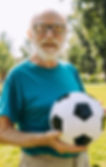
74000 Country Club Dr. Ste G1
Palm Desert, CA. 92260
California HCO License# 334700244

Exercise Routines for Older Adults: A Comprehensive Guide
0
2
0

As we age, staying active becomes more crucial than ever. Exercise helps maintain independence, manage chronic conditions, improve mood, and enhance overall quality of life. This guide explores various exercise routines specifically designed for older adults, ensuring safety and effectiveness.
Benefits of Exercise for Older Adults
Regular physical activity provides numerous benefits, including:
Improved Cardiovascular Health: Reduces the risk of heart disease and stroke.
Enhanced Mobility and Flexibility: Helps maintain balance and coordination, reducing the risk of falls.
Stronger Bones and Muscles: Prevents osteoporosis and maintains muscle mass.
Better Mental Health: Alleviates symptoms of depression and anxiety, and improves cognitive function.
Increased Social Interaction: Group exercises foster social connections and reduce feelings of isolation.

Types of Exercises
Aerobic Exercises
Walking: A simple, low-impact exercise that can be done anywhere. Start with 10-15 minutes and gradually increase to 30 minutes daily.
Swimming: Excellent for cardiovascular health without putting stress on the joints. Aim for 20-30 minutes of swimming or water aerobics.
Cycling: Either on a stationary bike or outdoors, cycling strengthens the heart and legs.
Strength Training
Bodyweight Exercises: Squats, lunges, and push-ups help build muscle mass and strength.
Resistance Bands: These are great for beginners, offering a wide range of resistance levels.
Free Weights: Dumbbells and kettlebells can be used for a variety of exercises targeting different muscle groups.
Flexibility and Balance
Yoga: Improves flexibility, balance, and mental focus. Chair yoga is a good option for those with limited mobility.
Tai Chi: A gentle form of martial arts focusing on slow, deliberate movements to enhance balance and coordination.
Stretching: Daily stretching routines help maintain flexibility and prevent stiffness.
Functional Fitness
Sit-to-Stand: Practicing getting up from a chair without using hands strengthens leg muscles and improves balance.
Heel Raises: Stand behind a chair and lift your heels off the ground to strengthen calf muscles and improve stability.
Marching in Place: Boosts cardiovascular health and enhances balance.
Creating a Safe Exercise Routine

Consult a Healthcare Provider: Before starting any new exercise regimen, especially if you have chronic conditions or mobility issues.
Start Slowly: Gradually increase the intensity and duration of your workouts to avoid injury.
Warm Up and Cool Down: Always start with a 5-10 minute warm-up to prepare your body and end with a cool-down to reduce muscle soreness.
Stay Hydrated: Drink water before, during, and after exercise.
Listen to Your Body: Pay attention to any signs of pain or discomfort and modify exercises accordingly.
Sample Weekly Exercise Plan
Monday:
Morning: 20 minutes of brisk walking
Afternoon: 15 minutes of stretching exercises
Tuesday:
Morning: 15 minutes of bodyweight exercises (squats, lunges, push-ups)
Afternoon: 20 minutes of chair yoga
Wednesday:
Morning: 30 minutes of swimming or water aerobics
Afternoon: Rest or gentle stretching
Thursday:
Morning: 20 minutes of cycling (stationary or outdoor)
Afternoon: 15 minutes of Tai Chi
Friday:
Morning: 20 minutes of resistance band exercises
Afternoon: 10 minutes of heel raises and sit-to-stand exercises
Saturday:
Morning: 30 minutes of walking in a park or nature trail
Afternoon: 15 minutes of gentle stretching or yoga
Sunday:
Morning: Rest day or light activities like gardening
Afternoon: 10 minutes of marching in place

Tips for Staying Motivated
Set Realistic Goals: Start with achievable targets and gradually increase them.
Find an Exercise Buddy: Working out with a friend can make exercise more enjoyable and provide accountability.
Keep a Journal: Track your progress and celebrate milestones.
Join a Class: Many community centers offer exercise classes tailored for older adults.
Mix It Up: Vary your routine to keep it interesting and prevent boredom.
Conclusion
Regular exercise is essential for maintaining health and independence as we age. By incorporating a mix of aerobic, strength, flexibility, and functional fitness exercises, older adults can enjoy a vibrant and active lifestyle. Always remember to consult with a healthcare provider before beginning any new exercise program, start slowly, and listen to your body. Happy exercising!






